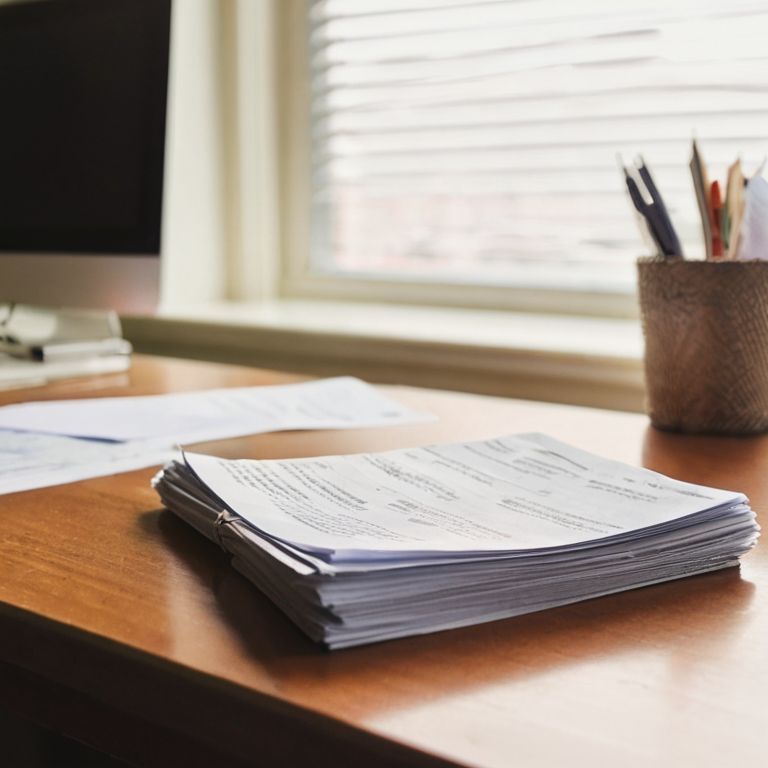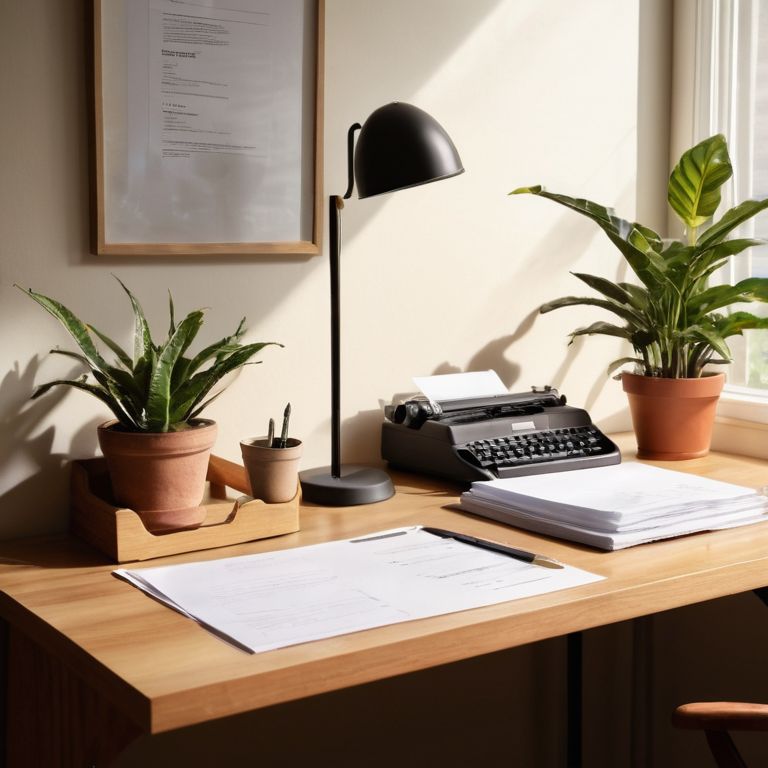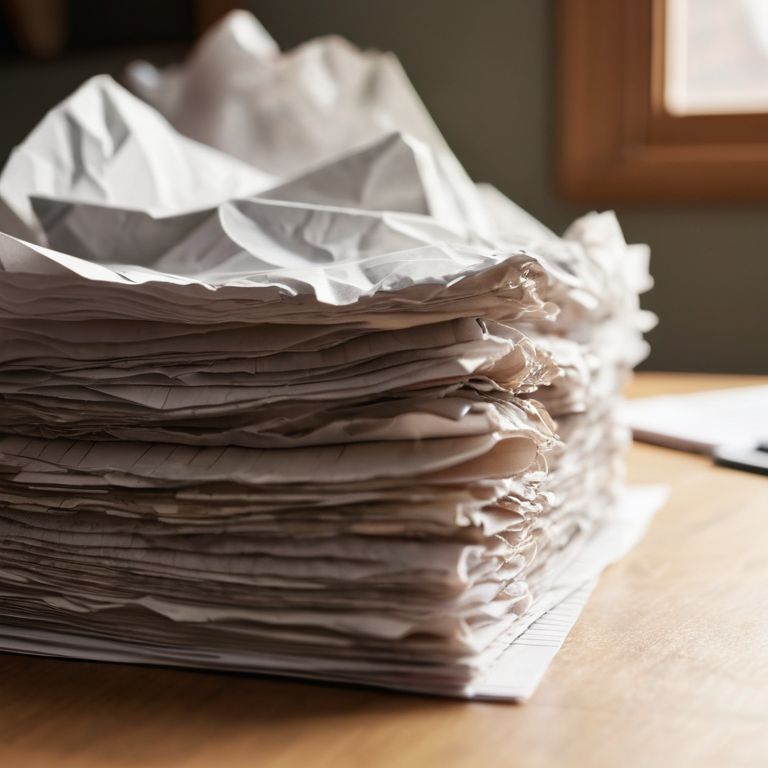As I sit in my serene, clutter-free home, surrounded by the soothing sounds of ambient music and the gentle scent of my bonsai trees, I’m reminded of the countless times I’ve helped clients tackle the first step to dealing with a paper pile. It’s a task that often feels daunting, but I’ve found that it’s not just about sorting papers – it’s about clearing mental clutter and creating a sense of calm in our lives. I’ve seen firsthand how a cluttered space can weigh heavily on our minds, and I’m passionate about sharing my expertise to help others achieve a more peaceful living environment.
In this article, I’ll share my straightforward, no-nonsense approach to tackling the first step to dealing with a paper pile. You can expect practical advice and a step-by-step guide on how to transform your paper clutter into a manageable, organized system. My goal is to empower you with the tools and confidence to create a space that truly feels like a sanctuary, where you can relax and recharge. By the end of this article, you’ll have a clear understanding of how to begin your journey towards a clutter-free life, and how the first step to dealing with a paper pile can be the catalyst for a more organized, peaceful you.
Table of Contents
Guide Overview: What You'll Need

Total Time: 30 minutes to 1 hour
Estimated Cost: $0 – $10
Difficulty Level: Easy
Tools Required
- Sturdy Tray or Box (for sorting papers)
Supplies & Materials
- Sticky Notes or Labels (for categorizing papers)
- Recycling Bin (for disposing of unnecessary papers)
- File Folders (for organizing documents)
Step-by-Step Instructions
- 1. First, let’s start by creating a safe space to work on your paper pile. This means finding a quiet, comfortable spot where you can focus without distractions. I like to think of this as setting up a temporary sanctuary where you can tackle your papers without feeling overwhelmed.
- 2. Next, gather all the necessary supplies, such as a sturdy chair, a large table or desk, and some soothing background music. I find that listening to ambient music can really help calm my mind and make the task at hand more enjoyable. You’ll also want to have a few basic tools like a paper tray, a recycling bin, and a shredder.
- 3. Now it’s time to clear the decks and remove any items from your workspace that aren’t related to your paper pile. This means putting away any unnecessary items, turning off your phone, and finding a quiet spot where you can work without interruptions. By doing this, you’ll be able to focus all your attention on the task at hand and make steady progress.
- 4. With your workspace all set up, it’s time to start sorting your papers into broad categories. This might include bills to pay, documents to file, and items to shred or recycle. Don’t worry too much about the details at this stage – just focus on getting everything sorted into rough groups. You can always refine your system later.
- 5. As you start sorting your papers, take a moment to interview each item and ask yourself if it’s truly necessary to keep. Be honest with yourself – do you really need to hold onto that old receipt or can you safely shred it? By being mindful of what you’re keeping and what you’re letting go of, you can start to develop a sense of what’s truly important to you.
- 6. Once you’ve sorted your papers into categories, it’s time to start creating a system for dealing with each group. This might involve setting up a filing system for your documents, creating a schedule for paying bills, or finding a safe place to store sensitive information. The key is to create a simple and logical system that works for you and your unique needs.
- 7. Finally, take a step back and celebrate your progress. You’ve made it through the first step of dealing with your paper pile, and that’s something to be proud of! Take a deep breath, put on some soothing music, and remind yourself that you’re one step closer to creating a peaceful and organized space that reflects your calm and serene inner self.
Taming Paper Chaos

As we dive into paper clutter reduction strategies, it’s essential to understand that every piece of paper requires a decision. This is where the _one-touch rule_ comes into play, encouraging you to handle each document only once. By implementing this rule, you’ll significantly reduce the time spent on paperwork and minimize the likelihood of misplacing important documents.
Effective filing systems for home are also crucial in maintaining a clutter-free space. Simple steps to maintain a paper-free office can be adapted for home use, focusing on categorization and easy access. It’s about creating a system that works for you, not against you. By doing so, you’ll experience the productivity benefits of a clean desk, allowing you to focus on more important tasks.
When organizing your papers, be aware of _common mistakes in document organization_, such as inadequate labeling or insufficient storage. To avoid these pitfalls, take the time to carefully consider your filing system and ensure it aligns with your needs. By doing so, you’ll be well on your way to a more organized, peaceful space that promotes mental clarity and calmness.
Effective Filing for Clarity
To achieve effective filing, it’s essential to create a system that promotes clarity. I recommend using labeled folders and categories that make sense to you, allowing you to quickly locate the documents you need. This simple step can significantly reduce stress and make your space feel more organized. By assigning a home for each type of document, you’ll be able to maintain your newfound sense of calm and focus.
As you file, remember to handle each piece of paper only once, making a decision about its purpose or place in your life. This mindset helps prevent clutter from building up again, keeping your space – and mind – clear.
First Step to Paper Peace
As we dive into the process of taming paper chaos, it’s essential to recognize that every piece of paper has a purpose or a place. I like to think of it as “interviewing” each document to determine its relevance and where it belongs. This mindset helps to declutter not just our physical space, but also our mental one. By acknowledging that each item has a designated spot, we can begin to let go of the unnecessary and focus on what truly matters.
This approach allows us to create a sense of control and serenity, much like the tranquility of a well-crafted bonsai tree. With each carefully considered decision, we prune away the distractions, making room for clarity and peace to flourish. As we work through our paper pile, we’ll uncover the joy of a organized space, and the sense of calm that comes with it.
Paving the Path to Paper Serenity: 5 Essential Tips
- Start by acknowledging the emotional weight of your paper pile, recognizing that it’s not just about sorting papers, but about clearing mental clutter too
- Set aside a dedicated block of time to tackle your paper pile, free from distractions, and with a calm and focused mindset
- Begin by gathering all your papers into one place, making it easier to see the scope of the task and plan your approach
- Implement the ‘handle each piece of paper only once’ rule, making a decision about each item as you touch it, to avoid perpetual procrastination
- Create a simple, logical filing system, with clearly labeled categories, to ensure that once your papers are sorted, they remain organized and easily accessible
Key Takeaways for a Clutter-Free Sanctuary
By acknowledging the emotional weight of paper clutter, you can begin to transform your space and clear your mind
Implementing a simple, logical filing system can bring clarity and reduce stress, allowing you to focus on what truly matters
Remember, every object in your home should have a purpose or a place, and by applying this principle, you can create a serene and organized environment that nurtures your well-being
Embracing the Journey to Paper Serenity
The first step to dealing with a paper pile is not about touching a single sheet, but about embracing the mindset that clarity begins with the courage to confront the chaos.
Nathan Reed
From Papers to Peace of Mind

As we’ve journeyed through the process of tackling that daunting paper pile, it’s essential to remember that every step counts. We started with the first step to paper peace, which involves acknowledging the emotional weight of clutter. Then, we moved on to effective filing for clarity, where we established a system to categorize and store our documents. By implementing these strategies, you’ve not only cleared your physical space but also begun to tame paper chaos. This sense of accomplishment is a testament to your commitment to creating a more serene living environment.
Now, as you stand in your newly organized space, take a moment to breathe it in. Feel the sense of calm that comes with knowing exactly where everything is. Remember, this journey is not just about organizing papers; it’s about cultivating a peaceful mindset. As you continue to nurture your space, you’ll find that the benefits of organization extend far beyond the physical realm, influencing your mental clarity, productivity, and overall well-being. Congratulations on taking the first step to a more organized you.
Frequently Asked Questions
What's the best way to sort through a massive paper pile without feeling overwhelmed?
Let’s break it down together. Start by gathering three boxes labeled ‘keep,’ ‘shred,’ and ‘file.’ Then, take a deep breath and begin sorting one paper at a time, asking yourself if each item sparks joy, serves a purpose, or needs attention. This simple system will help you tackle that massive paper pile with clarity and calmness.
How do I decide what papers to keep and what to discard?
To decide what papers to keep and discard, I recommend the ‘purpose or place’ test. Hold each paper and ask yourself: does it serve a purpose or have a designated place in my life? If not, it’s likely safe to let it go, freeing your space and mind from unnecessary clutter.
Can I really achieve paper peace with just the first step, or is it a long-term process?
While the first step sets the foundation, achieving true paper peace is indeed a journey. It’s a process that unfolds over time with consistent practice and patience. Think of it as nurturing a bonsai tree – it requires gentle, ongoing care to flourish.
